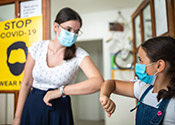
This blog post describes 10 of the most important steps schools and districts can take to address challenges related to COVID in 2022–23. Topics include mitigation strategies, social and emotional challenges, academic recovery, and the role schools can play in disseminating health information.
- Tools & School Guidance

While there is no definitive answer yet, a growing number of studies suggest that getting a COVID vaccine can reduce — though not eliminate — the risk of longer-term symptoms. While the evidence is not yet conclusive, it is clear that vaccines offer protection against infections and hospitalizations, which in turn decreases the chances of getting long COVID.
- Research
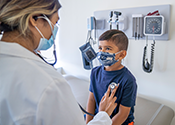
A new series of guidelines, linked in this press release, have been published in the American Academy of Physical Medicine and Rehabilitation to help pediatricians treat long COVID in children. The guidelines include lists of symptoms and strategies for evaluating them as well as information on how they can be treated.
- Tools & School Guidance
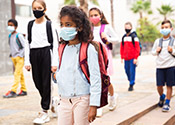
This fact sheet from the Kennedy Krieger Institute identifies almost two dozen specific accommodations that should be considered for students dealing with long COVID. Each accommodation focuses on conserving energy and prioritizing demands in school.
- Tools & School Guidance
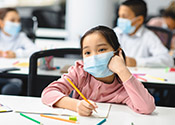
This article identifies the need for schools and districts to plan for how to identify and accommodate students with long COVID, which is thought to be massively underdiagnosed. Schools and districts can help in part by growing their Individualized Education Plan and 504 committees and training staff to be aware of common symptoms (including fatigue and cognitive issues like brain fog and processing or memory issues) so they can refer students to school health teams for further evaluation.
- Tools & School Guidance
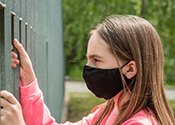
While there are relatively few studies about long COVID in children, research suggests that younger people are developing long COVID in significant numbers. The UK Office for National Statistics estimates that 44,000 children ages 2–11 in the country have long COVID, as do 73,000 12–16-year-olds. However, research on long COVID in children is lacking. Studies on adults have found that the impacts of long COVID can be significant: between one-fifth and one-third of those with long COVID remain ill at least 12 weeks after a diagnosis of COVID-19, and a significant number continue to experience symptoms many months later.
- Research
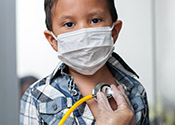
This article describes findings from a study, published in The Lancet Child and Adolescent Health journal, which is one of the first of its kind to include infants and toddlers. The study, of children ages 0-14 in Denmark, found that children previously infected with COVID were more likely than children in a control group to show a range of symptoms including fatigue, memory and concentration problems, mood swings, rashes, and stomach aches for 2 months or more following infection with the virus.
- Research
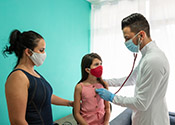
This meta-analysis of long COVID in children and adolescents, in Scientific Reports, estimates that up to 25% of children previously infected by COVID have some long COVID symptoms. The most common symptoms are mood symptoms (16.5%) like anxiety, depression, and anger; fatigue (9.7%); and sleep disorders (8.4%). The study also provides a breakdown of symptoms by body system and frequency.
- Research
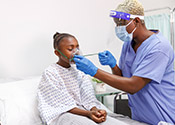
This study follows a cohort of nearly 2,000 children from eight countries, including the United States, who received positive COVID tests in emergency rooms to determine what proportion of those children have long COVID symptoms 90 days after infection. It reveals that approximately 10% of children who ended up admitted to the hospital and 5% of children who were discharged from the emergency room after their diagnosis showed long COVID symptoms 3 months out.
- Research